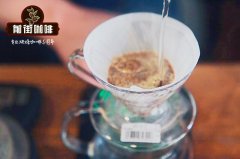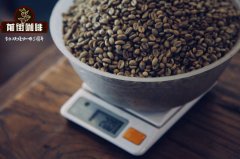Classification of Yejashefi Coffee Bean characteristics of coffee beans in Yega Sheffei producing area
Production area
Yegashefi was originally a medium-sized town for coffee beans distribution and transportation in Ethiopia's Sidama Province. Due to its elevation higher than other coffee-producing areas in Sidama Province (ancient volcanic soil), it is located in the south of Ethiopia and affected by the southeast monsoon of the Indian Ocean. In this dry and wet season, mineral-rich terroir environment, it is almost the perfect place for Arabica coffee beans to be tailor-made.
In Central and South America, coffee beans are cultivated systematically and in large quantities on large plantations, while coffee cultivation in the Yagashvili region is mostly mixed with other short-term crops, and yields vary greatly depending on the weather and pests in each year. Yields range from 200-700 kg per hectare, and these cultivation methods account for about 50% of Ethiopia's total coffee production.

taste and flavor
Ethiopian coffee is definitely a classic coffee, whether brewed in hot water or cold, with a high degree of plasticity in flavor. Because of its delicate floral and citrus fragrance, it has become a world-famous coffee producing area with the third wave of fine coffee beans.
In addition to delicate floral and citrus aromas, sucrose aromas and fruity aromas have a subtle elegance compared to the rough, angular flavors of Central and South America, and stand out among many fine coffee flavors.


grade division
According to different treatment methods, Yegashefei can be divided into A type washing treatment method: Gr-1, Gr-2;B type solarization treatment method: Gr-1, Gr-3, Gr-4, Gr-5. The lower the number, the higher the rank.
Important Notice :
前街咖啡 FrontStreet Coffee has moved to new addredd:
FrontStreet Coffee Address: 315,Donghua East Road,GuangZhou
Tel:020 38364473
- Prev

What's the difference between Japanese hand-made coffee and ordinary hand-made coffee? is Japanese hand-made coffee difficult to learn?
Do you know? A good cup of coffee can make people feel happy. At present, the most popular cafes in Taiwan are Italian-style cafes. In the past, traditional cafes focused on Japanese-style coffee. Because different consumers have different ways of making coffee, the overall style will be different. Japanese coffee presentation: if coffee is brewed to present coffee
- Next

The ranking system of raw beans in coffee producing countries introduces what is the best grade of coffee beans.
Ethiopia (rated in proportion to defective beans) before the emergence of the Ethiopian Commodity Exchange (Ethiopia Commodity Exchange referred to as ECX), Ethiopia's coffee export grade was established by the CLU Department (Cupping and Liquoring Unit) under the Ministry of Agriculture, mainly according to the number of defective beans in 300g. The classification criteria are as follows.
Related
- Beginners will see the "Coffee pull flower" guide!
- What is the difference between ice blog purified milk and ordinary milk coffee?
- Why is the Philippines the largest producer of crops in Liberia?
- For coffee extraction, should the fine powder be retained?
- How does extracted espresso fill pressed powder? How much strength does it take to press the powder?
- How to make jasmine cold extract coffee? Is the jasmine + latte good?
- Will this little toy really make the coffee taste better? How does Lily Drip affect coffee extraction?
- Will the action of slapping the filter cup also affect coffee extraction?
- What's the difference between powder-to-water ratio and powder-to-liquid ratio?
- What is the Ethiopian local species? What does it have to do with Heirloom native species?

